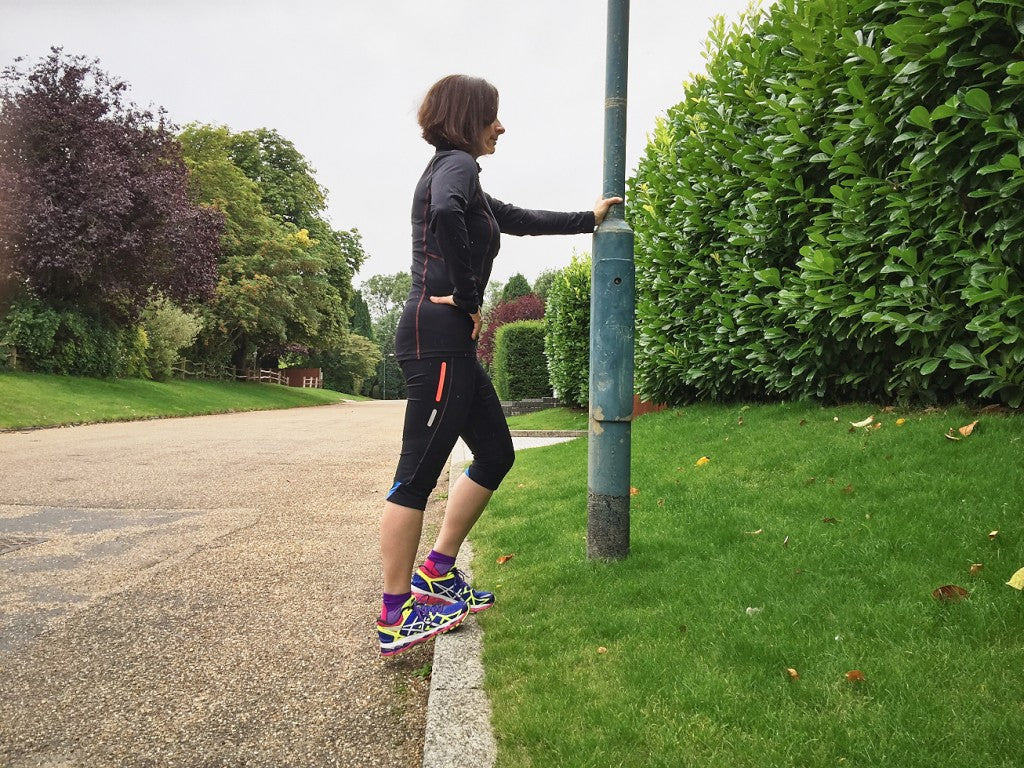Run every day without injury
- Christina Macdonald
- Featured News
- General News
- October Challenge
- RunEveryDay
- Uncategorised

If you plan to run every day, then you need to take certain steps to remain injury-free and enjoy the experience. Here is our guide to daily running…
1. Invest in an all-weather running wardrobe all-weather running. This will mean buying some waterproof kit, a windproof jacket, shorts, tights and a peak cap to help keep the rain out of your eyes on a wet day.
2. Buy the right pair of trainers. Visit a specialist running store, ideally later in the day when your feet are swollen. Wear the socks you intend to wear when you run. You will probably need to go up at least one or one and a half shoe size bigger than your normal size, as your feet swell when you get hot. The heel of the shoe should fit snugly without it slipping up and down at the back and you should have enough room to wiggle your toes at the end.
3. On the subject of socks, buy running socks with wicking properties to draw moisture away from your feet and prevent blisters.
4. Replace your running shoes every 300 to 500 miles, or when you think they are getting worn out. Your shoes might be worn out if one or both of them won’t stand up when on a flat surface, or if your toes begin to wear through the end of the shoe.
5. Go for short runs. If you’re a new runner, start with five or ten minutes each day. If you’re a more experienced runner, start with 20 or 30 minutes. Don’t worry too much about speed. Remember, your aim is to stay injury-free.
6. Increase volume gradually. Add two minutes to each run if you want to build volume. Otherwise, run for approximately the same duration.
7. Have at least one day per week where you run for just a short distance. Most fitness experts would advocate at least one day of complete rest from exercise per week, so be sure to have at least one very short and gentle session.
8. Don’t follow a hard run with another gruelling session the next day. Even better, try to avoid very strenuous sessions.
9. Don’t get sucked into the latest media hype about changing your running technique or shoe type, unless you are experiencing pain or soreness during or after your run. If it isn’t broken, don’t fix it.
10. Make sure you warm up before each run with some dynamic stretches, such as straight leg swings and knee raises, and then start with a slow walk into a brisk walk and then a light jog before you break into a run. The first five minutes of your run should be at an easy pace that allows your heart rate to gradually increase and your muscles to get prepared for the run.

11. Listen to your body. If you feel tired or stiff, make it an easy run day. A short run, where you jog lightly is fine too. Don’t be afraid to combine short periods of brisk walking with light jogging.
12. To stay motivated and reduce injury risk, change the routes or the type of run. Find a varied off-road route with appealing scenery. Otherwise, flat grass or a treadmill run will provide extra cushioning.
13. Finish each run with some stretching. Stretch the major muscles worked, notably the quadriceps (front thighs), hamstrings (rear thighs), calves (lower legs), hip flexors and the glutes (buttocks) as well as the chest and upper back. Hold each stretch for at least 30 seconds. Never skip stretching, as this will help to reduce post muscle soreness and also prevent tightness that over time, can lead to an increased risk of injury.


14. Do yoga at least once a week. Find a class that focuses purely on giving you a good stretch.
15. Use a foam roller on your legs, ideally every day to massage out tight knots in the muscles. Have a good sports massage at least once a month.
16. If you feel any knee pain, apply ice the to knee (wrapped in a tea towel) at the end of your run and see how it feels the next day. If you have persistent pain, visit a physiotherapist without delay.
About the author
Ronhill is delighted to work with Christina Macdonald, a highly experienced fitness writer and editor with more than 20 years’ of experience in media. A keen runner herself, she has completed numerous 5K and 10K events, ten half marathons and two marathons. She is also a qualified Level 3 Personal Trainer and running group leader. Christina is on the board as Contributing Editor for Women’s Running in addition to owning her own content company, Healthy Content. Follow her @writefitchris
